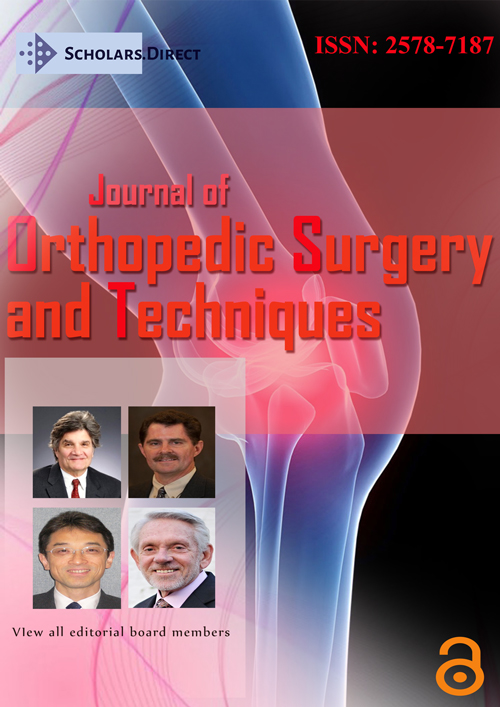Upright Walking Increases Stimulation of the Nervous System
During walking optimal stimulation of the nervous system depends on how upright we walk. When we use heeled footwear it makes us lean somewhat more forward and then we lose an amount of stimulation. If we could use foot wear that don't lift the heel of the foot, important improvements in our defense against various diseases would occur and the treatments of Hippocrates could be used once more.
Several million years ago parts of our skeleton were rebuild to make us walk upright [1,2]. We then could walk with long strides and high mechanical efficiency while not falling over [2]. When starting to walk inhibition of the tonically active triceps surae muscles made the whole body fall forward over the stance ankle. This stretched the muscle and loaded the tendon with elastic energy [3], which then was sent by the tendon organs to the cerebellar gait centre, where it stimulated neurovascular units that regulate blood flow and energy delivery to the cerebrum [4-6]. The increase in blood flow was clearly related to neurogenesis [7].
In Western Europe people began wearing heeled shoes as early as before 1453 [8], the boundary between The Middle Ages and The Early Modern Times. Then, when starting to walk wearing shoes that lift the heels of the feet, people were less upright than earlier as they were leaning more forward. The potential energy of the body was a little smaller and due to its transformation into less kinetic energy there was a decreased fall of the body [9]. Less stretching of the triceps surae, resulted finally in decreased neurogenesis.
When people stand barefoot they perform as they had done wearing heeled shoes. Probably, the reason for this is that force-transducing receptors in the legs appear to be excluded as source of the somatic information [10]. Instead this information could have been transferred to the lumbar gait centre and then the nervous system could not have been able to change this state unless shoes not lifting the heel are used. Probably the heel's support area must be large enough, as this makes it possible for the nervous system to transfer somatic information from the soles to the lumbar gait centre as soon as the swing heel lifts.
The stimulation of the nervous system continued, but in the Western World people have lost a great deal of it because of loss of optimal stimulation during at least the last hundred years. We can get an idea of what to regain if we look at the importance of more physical activity. During both walking and running, the body is in a constant state of falling forward [11]. Schizophrenia and other dementias would be less present [12-14], we would get better cardiovascular function [15], better functioning with diabetes type II [16], and better pull through infectious diseases [17,18].
Studies of blood pressure during spaceflight have shown that within 2 weeks diastolic pressure decreased, whereas systolic and mean pressures remained unchanged [19,20]. One study reported that both systolic and diastolic pressures decreased during 3 to 6 months of spaceflight [21]. During 6 months of spaceflight, systolic blood pressure, mean arterial pressure, and pulse pressure decreased, and diastolic pressure was unchanged [22]. If the last study proves to be the most reliable and because of the better use of gravity in people with upright walking we could infer that systolic blood pressure, mean arterial pressure, and pulse pressure would increase, and diastolic pressure be unchanged compared to people wearing heeled shoes.
In the 1970s Heath [12] stimulated the vermal gait center in 11 patients with intractable psychiatric illness, and so succeeded in positively affecting 4 patients with schizophrenia. They had been ill for at least 6 years, but could, with stimulation, be discharged and then function without medications or other treatment. Crenna, et al. [14] stimulated the subthalamic nucleus in Parkinson's disease and found significant improvement in vertical alignment of the trunk and shank.
The pattern of age mortality with a heavy toll on the young adult population can be considered one of the most important and identifying characteristics of the "Spanish" influenza pandemic [18]. An explanation could be the use of heeled shoes. At the end of the 19th century speed and efficiency of shoe production greatly increased, and more and more people changed to wearing modern Western heeled shoes. Something like this could then have happened: People who were 20-30 years-old in 1918 were born in 1878-1888. They began school in 1885-1895, from then on wore heeled shoes, thereby lost optimal stimulation of the nervous system during the years they were growing up and so were less well defended against viral attack. People who were 50-60 years-old in 1918 were born in 1858-1868. They began school in 1865-1875, still wore shoes with no heels. Optimal stimulation of the nervous system continued until later in life when they were provided with heeled shoes when beginning to work, starting military training or getting married. Thanks to a longer time of optimal stimulation when growing up, they were better defended against viral attack.
In Ancient Greece people used footwear which didn't lift the heel of the foot, so they were much better defended against most diseases. When they still fell ill, Hippocrates used treatments according to which the body contains within itself the power to rebalance its functions and so to heal itself. Now, if people could start using footwear which don't lift the heel, medicine would transform and physicians could once more take advantage of Hippocrates' treatments.
Unfortunately, on the market there probably are few shoes that don't lift the heel, but you may yourself be able to make a suitable pair of such shoes. Take a pair of Plimsoll-style canvas shoes with rubber soles. They look quite flat but are provided with an in-sole (the sole just under the foot in the shoe) that is a little thicker in the heel-part. In general, it is lightly glued into the shoe and can easily be removed. You can easily ascertain this by putting your thumb on the place of the heel of the foot in the shoe and the index finger opposite to the thumb under the shoe. Then you put the thumb on the place of the first joint of the big toe and the index finger opposite it. You will easily find that the sole is equally thick on both sites. Now, always use these shoes and you'll with time find improvements in many functions of your body.
The author had no opportunity to take part in any study of the relation between upright walking and stimulation of the nervous system. A possible way to examine this is to use a study such as that in Ref. [21] where blood pressure was compared in different gravities. Use subjects wearing shoes that don't lift the heel and compare their pressure to the pressure in subjects wearing heeled shoes. This study could probably be performed in 6 months, too.
References
- Lovejoy CO (2005) The natural history of human gait and posture Part 1. Spine and pelvis. Gait Posture 21: 95-112.
- Gruss LT, Schmitt D (2015) The evolution of the human pelvis: Changing adaptations to bipedalism, obstetrics and thermoregulation. Philosoph Trans R Soc Lond B 370: 1-13.
- Hof AL (2003) Muscle mechanics and neuromuscular control. J Biomech 36: 1031-1038.
- Konorski J, Tarnecki R (1970) Purkinje cells in the cerebellum: Their responses to postural stimuli in cats. Proc Natl AcadSci USA 65: 892-897.
- Attwell D, Buchan AM, Charpak S, et al. (2010) Glial and neuronal control of brain blood flow. Nature 468: 232-243.
- Decety J, Sjöholm H, Ryding E, et al. (1990) The cerebellum participates in mental activity: Tomographic measurements of regional cerebral blood flow. Brain Res 535: 313-317.
- McConnell HL, Kersch CN, Woltjer RL, et al. (2017) The translational significance of the neurovascular unit. J BiolChem 292: 762-770.
- Shoes D (2021) The history and evolution of shoes.
- Honeine JL, Schieppati M, Gagey O, et al. (2013) The functional role of triceps-surae in human locomotion. PLoS One 8: e52943.
- Mittelstaedt H (1992) Somatic versus vestibular gravity reception in man. Ann N Y Acad Sci 656: 124-139.
- Cavagna GA, Willems PA, Heglund NC (2000) The role of gravity in human walking: Pendular energy exchange, external work and optimal speed. J Physiol 528: 657-668.
- Heath RG (1977) Modulation of emotion with a brain pacemaker. J Nerv Ment Dis 165: 300-317.
- Rovio S, Kåreholt I, Helkala EL, et al. (2005) Leisure time physical activity at midlife and the risk of dementia and Alzheimer’s disease. Lancet Neurol 4: 705-711.
- Crenna P, Carpinella I, Rabuffetti M, et al. (2006) Impact of subthalamic nucleus stimulation on the initiation of gait in Parkinson’s disease. Exp Brain Res 172: 519-532.
- Jakovljevic DG (2018) Physical activity and cardiovascular aging: Physiological and molecular insights. Exp Gerontol 109: 67-74.
- Schreuder THA, Maessen MFH, Tack CJ, et al. (2014) Life-long physical activity restores metabolic and cardiovascular function in type 2 diabetes. Eur J Appl Physiol 114: 619-627.
- Pape K, Ryttergaard L, Rotevatn TA, et al. (2016) Leisure-time physical activity and the risk of suspected bacterial infections. Med Sci Sports Exerc 48: 1737-1744.
- Johnson NPAS, Mueller J (2002) Updating the accounts: Global mortality of the 1918-1920 "Spanish" influenza pandemic. Bull Hist Med 76: 105-115.
- Fritsch Yelle JM, Charles JB, Jones MM, et al. (1996) Microgravity decreases heart rate and arterial pressure in humans. J Appl Physiol 80: 910-914.
- Karemaker JM, Berecki-Gisolf J (2009) 24-h blood pressure in space: The dark side of being an astronaut. Respir Physiol Neurobiol 169: S55-S58.
- Norsk P, Asmar A, Damgaard M, et al. (2015) Fluid shifts, vasodilatation and ambulatory blood pressure reduction during long duration spaceflight. J Physiol 593: 573-584.
- Fu Q, Shibata S, Hastings JL, et al. (2019) Impact of prolonged spaceflight on orthostatic tolerance during ambulation and blood pressure profiles in astronauts. Circulation 140: 729-738.
Corresponding Author
Jarl Flensmark, Grönkullagatan 41, 254 57 Helsingborg, Sweden
Copyright
© 2022 Flensmark J. This is an open-access article distributed under the terms of the Creative Commons Attribution License, which permits unrestricted use, distribution, and reproduction in any medium, provided the original author and source are credited.




